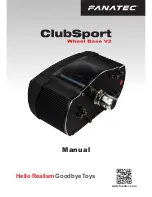
A
C
B
D
REAR PANEL
E
F
G
I
H
J
A
1/4” INPUT (UNBALANCED) (RIGHT)
TIP: HOT
SLEEVE: GROUND
B
XLR INPUT (BALANCED) (RIGHT)
PIN 1: GROUND
PIN 2: (+)
PIN 3: (-)
C
1/4” OUTPUT (UNBALANCED) (RIGHT)
TIP: HOT
SLEEVE: GROUND
D
XLR OUTPUT (BALANCED) (RIGHT)
PIN 1: GROUND
PIN 2: (+)
PIN 3: (-)
E
IEC MAINS CONNECTOR
Standard IEC mains connector for 50 /60 Hz AC.
F
MAINS FUSE
Replace only with 1A SLO-BLO (120V) or 0.5A SLO BLO (230V).
G
XLR INPUT (BALANCED ) (LEFT)
PIN 1: GROUND
PIN 2: (+)
PIN 3: (-)
H
1/4”INPUT (UNBALANCED ) (LEFT)
TIP: HOT
SLEEVE: GROUND
J
XLR OUTPUT (BALANCED) (RIGHT)
PIN 1: GROUND
PIN 2: (+)
PIN 3: (-)
K
1/4” INPUT (UNBALANCED) (RIGHT)
TIP: HOT
SLEEVE: GROUND
5
Old versions of the ELOP
®
were unbalanced only. This version has both transformer (floating !) balanced
and unbalanced (transformerless) inputs. The outputs are similar, offering transformer (floating) bal-
anced XLR and unbalanced 1/4 jacks. The output transformers are “driven” either way so even using
unbalanced outputs there may be a part of the “character” caused by the iron. Recording engineers tend
to prefer the sound of good transformers. If done right, they saturate a little in the deep lows and this
effect “warmth” is usually attributed to “tubes”. Its the tubes that give it that clean, immediate, musical
quality. Transformers give that rich, fat bottom end - its not a “boost” like EQ but more like a low fre-
quency “exciter”. Analog tape also saturates this way, as does the better vintage gear - tube or discrete.
































